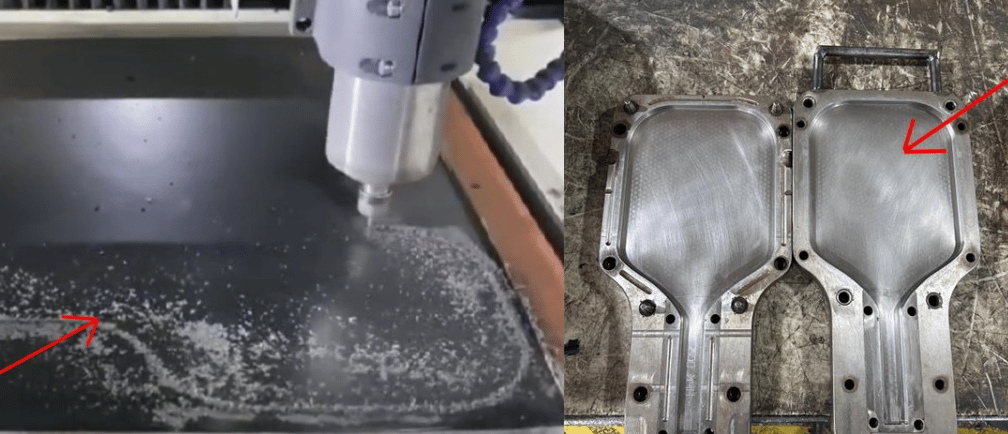
Cold Press Technology vs Hot Press Technology
Cold press manufacturing involves a unique process that does not require the application of heat. Instead, the paddle materials are bonded together using lower pressure. This technique allows for greater flexibility in paddle design, enabling manufacturers to experiment with different materials, thicknesses, and core constructions.
TECH CORNER
6/21/20223 min read


Cold Press Technology
The innovative Cold Press Technology is a manufacturing process that stands out for its heat-free approach. Unlike traditional methods, this technique utilizes lower pressure to bond paddle materials together. This opens up a world of possibilities for paddle design, as manufacturers can now explore various materials, thicknesses, and core constructions. The result is a range of Cold Press paddles that offer players enhanced control, improved touch, and even unique vibration dampening properties. With these customizable options, players can truly personalize their playing experience to match their individual preferences.
Hot Press Technology
The process of hot press technology is commonly used in the production of pickleball paddles. This method incorporates edge foam injection and thermoforming procedures, where foam is injected into the edge of the paddle and exposed to high temperatures and pressure. The main goal of this technique is to create a strong bond between the layers of the paddle, leading to improved durability, stiffness, and reliable performance.
Pickleball paddles manufactured using hot press technology have become the preferred choice in the industry because of their consistent playing characteristics and proven track record. The reliability of hot press paddles makes them stand out as they consistently deliver the same level of performance, making them a popular choice among players of all skill levels. The durability and stiffness provided by this manufacturing process ensure that the paddles can withstand intense gameplay without compromising on quality.
Overall, hot press technology has revolutionized the way pickleball paddles are manufactured, setting a high standard in the industry. The precise bonding achieved through this method guarantees that players can rely on their paddles to perform consistently, giving them the confidence to focus on their game without worrying about equipment quality. With its proven benefits and track record, hot press paddles have cemented their place as the go-to choice for players looking for reliable and high-performance equipment.
Key Differences
Hot press paddles are known for their durability due to the strong bonds formed during the thermoforming process. This makes them able to withstand intense gameplay and prolonged use. On the other hand, cold press paddles may have varying levels of durability depending on the specific materials and construction techniques used.
When it comes to playing characteristics, both manufacturing processes can produce high-quality paddles. However, cold press technology allows for more customization and experimentation. Manufacturers can fine-tune the paddle's characteristics to achieve specific playing attributes such as increased control, touch, or a unique feel. Hot press paddles, on the other hand, are more standardized and are known for their consistent performance and reliable playing experience.
In terms of production flexibility, cold press technology offers manufacturers greater design flexibility. They can create paddles with unique shapes, sizes, and core constructions. In contrast, hot press paddles often require the creation of molds in advance, which may limit the available design variations. However, hot press technology is still preferred when consistency and adherence to industry standards are crucial.
Conclusion
In the realm of pickleball paddle selection, delving into the intricacies of the manufacturing processes can shed light on the unique qualities and performance attributes of each paddle. Cold press technology allows for customization and a one-of-a-kind playing experience, while hot press technology guarantees reliability and longevity in terms of performance. The decision between cold press and hot press paddles ultimately boils down to personal player preferences, individual playing styles, and the desired characteristics one seeks in a paddle.
With the pickleball landscape constantly evolving, paddle manufacturers are consistently pushing the envelope by introducing new innovations and experimenting with different methods to elevate paddle design and performance. Whether you lean towards a cold press or hot press paddle, the crux lies in finding a paddle that aligns with your specific playing style and elevates your overall pickleball journey.
sales@pickleballtek.com
Socials
Subscribe to our newsletter
(949) 456-0000
